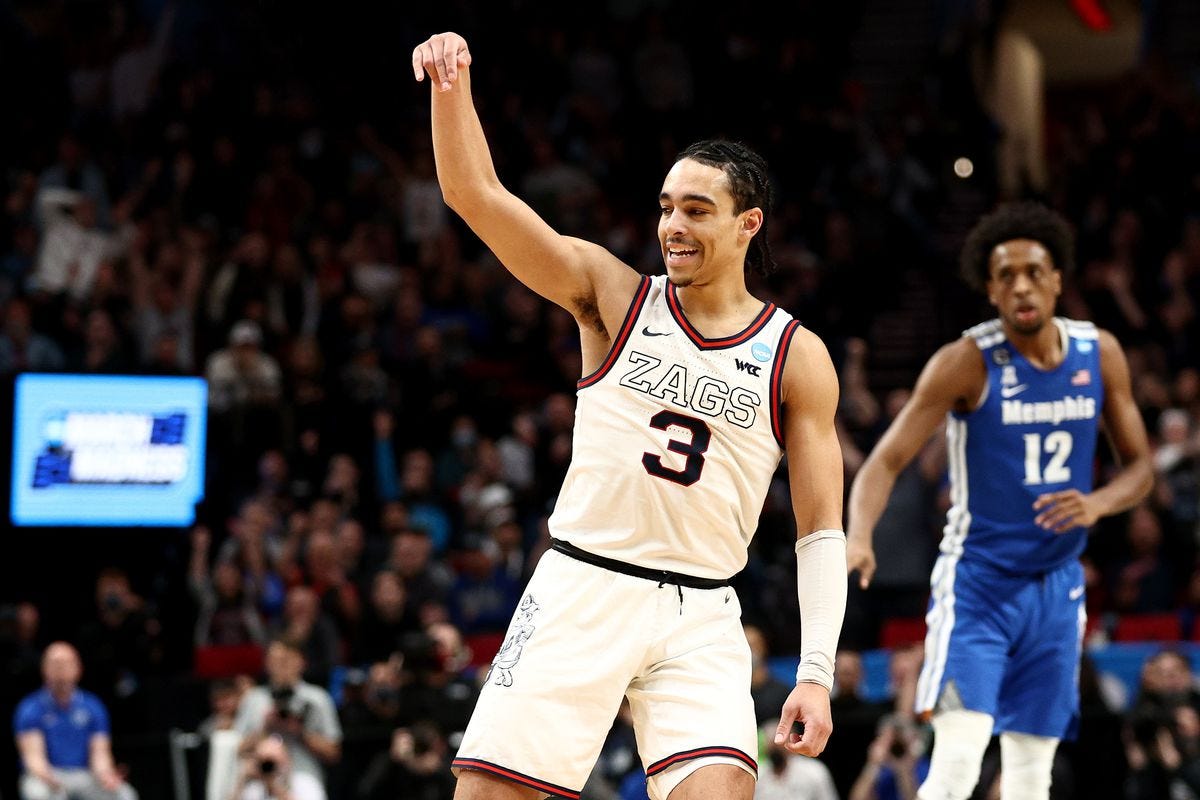Andrew Nembhard: 2022 NBA Draft Scouting Report
The rare upperclassmen late riser, Nembhard has his fans thanks to polished pick-and-roll play. Can he burst into the first round?
Late in the draft process, Gonzaga point guard Ryan Nembhard is starting to turn heads as a steady, reliable backup option for the NBA. There’s very little that is flashy about Nembhard’s game. He’s been a consistent perform for four years in college; two at Florida and two at Gonzaga.
The Zags guard played the combo last year next to Jalen Suggs, a role he was less equipped for. He shot only 32.3% from deep, but his impressive assist to turnover ratio really popped in Mark Few’s ball screen hi-lo system. This year was much different. Nembhard played with the ball in his hands much more, creating as the primary guard and his assist numbers rose a tad.
So did his 3-point shooting. Nembhard, for the first time in his career, cracked the 35% mark from deep, jumping all the way up to 38.3%. A polished, poised, patient ball screen creator, there’s something nice about the consistent production he provides, especially if that shot falls.
The list of players to average 5.5 assists, fewer than two turnovers and shoot 38% from 3 is pretty thin, and is highlighted by smaller guards like Ty Lawson and Fred VanVleet. Nembhard is a bit bigger at 6’5”, but the ability to control the game (out of ball screens and in general) without turning the rock over is incredibly appealing. Size, which could combine with multi-positional defensive upside, pushes him into very solid territory.
Nembhard is a solid defender in a ton of ways. He’s long as a point guard and has shown the ability to slither around ball screens. Those are two attractive traits for a point of attack defender: length to smother smalls and the neutralization of an advantage gained by screens. Nembhard finishes drives at the rim with verticality, using his length and mature, developed chest (he’s already 22 years old) to wall up and make it difficult to score on.
The defense isn’t all rosy, though. Nembhard doesn’t play low enough, meaning quicker or more decisive guys can go past him without a screen. The best offensive players he faced had their way with him a bit (he was good in the Texas Tech game against bigger drivers but struggles with speed). When he’s beat, he reaches for back tips — a pet peeve of ours.
While his defensive impact may come out in the wash, the offense is really the appeal. We understand the instant injection of steady PNR production he can provide a team, though we’re skeptical of both the upside to accomplish the traits he flashed at Gonzaga on an NBA floor, and of the consistency of his shooting.




